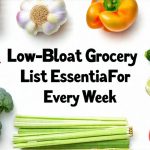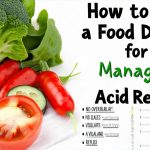Symptom tracking is an incredibly valuable tool for anyone seeking to understand their body’s relationship with food. It’s more than just identifying what seems to cause issues; it’s about building a detailed, personal map of how different foods affect you specifically. Many people start symptom journals with enthusiasm, only to become overwhelmed and discouraged when faced with the complexity of dietary influences. A key element in maintaining consistency and deriving meaningful insights from tracking is establishing a ‘safe’ food list – a foundation of well-tolerated foods that allows you to experiment cautiously while minimizing discomfort. This isn’t about restriction; it’s about creating a secure basecamp for exploration, allowing you to confidently add potential trigger foods one at a time and accurately assess their impact without constant flare-ups.
The challenge lies in defining what constitutes ‘safe’. It’s rarely a static list, varying significantly between individuals based on sensitivities, allergies, intolerances, and even gut health. A safe food list isn’t necessarily about eliminating entire food groups; it’s often about identifying specific components within those groups that cause problems. For example, someone might react to lactose but tolerate other dairy products like hard cheeses. Or they may find nightshades problematic in large quantities but can handle small amounts. The process of building this list is interwoven with the symptom tracking itself, and requires patience, honest self-assessment, and a willingness to adjust as you learn more about your body’s unique needs. It’s about empowering yourself with knowledge, not feeling limited by perceived restrictions.
Building Your Initial Safe Food List
The starting point for any safe food list should be foods that have historically caused no issues, or very minimal ones. Think back to times when you felt well – what were you eating then? This isn’t necessarily your ‘ideal’ diet, but a baseline of relative comfort. Don’t overthink this initial stage; focus on simplicity and familiarity. The goal is to create a short list (around 10-20 foods) that provides adequate nutrition without triggering symptoms. It should be enough variety to prevent boredom and ensure you’re getting essential nutrients while you begin the process of identifying potential triggers.
This initial list should lean towards whole, unprocessed foods whenever possible. These are generally easier to identify as sources of issues – if you react to a simple apple, it’s clear what’s causing the problem. Conversely, processed foods contain multiple ingredients, making pinpointing the culprit much more difficult. Consider including: – Plain rice (white or brown) – Well-cooked chicken or turkey (without seasoning initially) – Steamed vegetables like broccoli, carrots, or green beans – observing if different veggies cause different reactions – Simple fruits like applesauce or bananas – Olive oil for cooking. You can also learn how to use food logs to aid in this process.
Remember that a safe food list isn’t meant to be permanent. It’s a temporary tool used during the symptom tracking process. As you identify foods you can tolerate without issue, they remain on the list and provide stability while you investigate others. As you pinpoint triggers, those are removed or limited. This dynamic nature is crucial for long-term dietary management.
The Role of Symptom Tracking in Refining Your List
Symptom tracking isn’t just about recording what you eat; it’s about meticulously documenting how your body responds. Be as specific as possible when logging symptoms, noting not only the type (e.g., bloating, headache, fatigue), but also the severity (on a scale of 1-10) and timing in relation to food intake. A detailed log allows you to identify patterns and correlations that would otherwise go unnoticed. Use a consistent method for tracking – whether it’s a physical journal, a spreadsheet, or a dedicated app. Consistency is key to accurate data collection.
When introducing new foods, do so one at a time, allowing several days (typically 3-7) between each addition to observe any potential reactions. This isolation is critical; if you introduce multiple new foods simultaneously and experience symptoms, it’s impossible to know which one is responsible. Start with small portions of the new food and gradually increase the amount if no adverse effects are observed. If a symptom appears, immediately remove the newly introduced food from your diet and note it as a potential trigger. Don’t dismiss mild reactions; even subtle changes in energy levels or mood can be indicators of underlying sensitivities.
It’s also important to track other factors that could influence symptoms, such as stress levels, sleep quality, exercise, and medications. These variables can often mimic food-related issues, leading to inaccurate conclusions. Differentiating between these factors requires careful observation and documentation. The more information you gather, the clearer your picture will become, and the more accurate your safe food list will be. You might also find it helpful to create a food reaction journal alongside symptom tracking.
Identifying Common Trigger Foods & Initial Elimination Strategies
Many individuals find certain food groups are common culprits behind digestive distress or other symptoms. While everyone’s experience is unique, being aware of these potential triggers can help streamline the tracking process. Gluten, dairy, soy, corn, and nightshades (tomatoes, peppers, eggplant, potatoes) frequently appear on lists of problematic foods. This doesn’t mean you should automatically eliminate them; it simply means approaching them with extra caution during your trial periods.
Initial elimination strategies often involve removing suspected trigger foods for a period of time (typically 2-4 weeks) to allow the body to ‘reset’. During this elimination phase, focus exclusively on your safe food list and meticulously track any changes in symptoms. If symptoms improve significantly during elimination, it suggests that one or more of the removed foods may be contributing factors. Reintroduction then follows, carefully adding each eliminated food back into the diet individually, following the same protocol as described earlier – one at a time, small portions, careful observation.
It’s vital to avoid self-diagnosis and seek guidance from a healthcare professional if you suspect you have a food allergy or intolerance. Proper testing can confirm sensitivities and help develop a safe and effective dietary plan. Remember that elimination diets should be approached thoughtfully and not continued indefinitely without professional supervision, as they can potentially lead to nutrient deficiencies. If managing multiple conditions, consider creating a legacy through proactive health management.
Dealing with Hidden Ingredients & Cross-Contamination
The challenge of identifying triggers isn’t always straightforward. Many foods contain hidden ingredients that can cause reactions, even if the primary ingredient seems well-tolerated. For example, seemingly simple bread products may contain gluten, dairy, or soy as additives. Reading labels carefully and opting for whole, unprocessed foods whenever possible is crucial. Pay attention to ingredients you don’t recognize – research them online or avoid products containing them altogether.
Cross-contamination can also be a significant issue, particularly for individuals with allergies or severe sensitivities. Using separate cutting boards, utensils, and cookware for allergen-free foods can help minimize the risk of accidental exposure. Be mindful when eating out; inform your server about your dietary restrictions and inquire about potential cross-contamination in the kitchen.
Consider keeping a detailed list of ingredients you’re avoiding to refer to while grocery shopping or dining out. This proactive approach can significantly reduce the chances of accidental exposure and prevent unnecessary symptoms. It’s also useful to remember that even ‘trace amounts’ of an allergen or trigger food can cause reactions in highly sensitive individuals, so vigilance is key.
Beyond Food: Considering Lifestyle Factors & Gut Health
While focusing on dietary triggers is essential, it’s important to recognize that food isn’t the only factor influencing symptoms. Stress levels, sleep quality, hydration, and gut health all play significant roles. Chronic stress can disrupt digestion and exacerbate sensitivities. Insufficient sleep weakens the immune system and increases inflammation. Dehydration can lead to constipation and digestive discomfort.
Gut health is particularly crucial, as a compromised microbiome can impair nutrient absorption and increase susceptibility to food reactions. Consider incorporating probiotic-rich foods (like fermented vegetables or yogurt – if tolerated) into your diet and exploring strategies to support gut health, such as managing stress and avoiding unnecessary antibiotics. A healthy gut barrier helps prevent undigested food particles from entering the bloodstream, reducing the risk of immune activation and inflammation.
Ultimately, building a safe food list is an ongoing process of self-discovery. It requires patience, consistency, and a willingness to adapt your approach based on your individual needs and experiences. It’s about creating a sustainable relationship with food that supports your overall health and wellbeing, not just eliminating everything you perceive as problematic. Remember to focus on what you can eat, rather than dwelling on what you can’t – empowering yourself to enjoy nourishing foods without fear of discomfort. If you have children, remember the value of a kid-friendly journal. Consider creating a GERD-friendly grocery list to help with symptom management and finally, track bloating patterns.


















